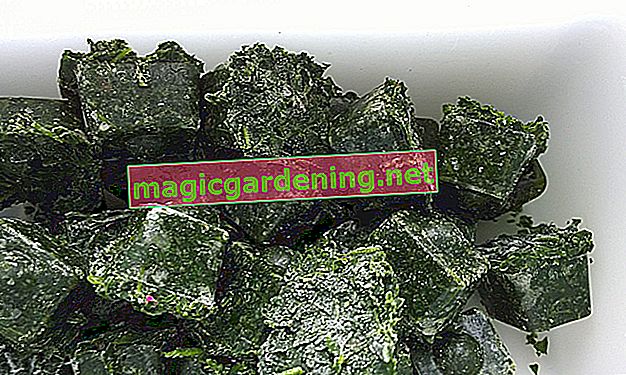
Diseases on the fruit tree
There are many special diseases that only affect certain types or varieties of fruit. These include, for example, the pear grate in pears and the curl disease in peaches. Many diseases can be contained from the outset by taking good preventive care:
- Choice of a suitable location
- Avoidance of fruit types and varieties that are unsuitable for your own location
- Keep the planting distances
- Keep the crowns light, cut fruit trees regularly
- Preference for resistant varieties
also read
- Fungal Infestation in Fruit Trees - Common Pathogens and What To Do About Them
- The most common pests on the fruit tree - and what you can do about them
- Common lilac pests and what to do about them
In the following, we will introduce you to the diseases that frequently occur in many types of fruit and show you possible measures to combat them.
Monilia fruit rot
This disease is caused by the monilia fungus, which is mainly spread by wasps during fruit ripening.
Damage:
At first, there are small rotten spots on the fruit, but these quickly spread. The ring-shaped, gray-brown upholstery mold is typical. The fruits rot and can no longer be used.
Control measures:
The infected fruits should be collected and destroyed. In the course of pruning the fruit tree in winter, remove the diseased fruit that is still on the tree, as these mummies will infect healthy fruit in the next year
Branch monilia
This is also a disease caused by a fungus. It occurs mainly in sour cherries and other stone fruit.
Damage:
During flowering, especially in rainy weather, the flowers wilt and dry up. As the process progresses, the shoots and leaves die off, which is why the disease is often referred to as “peak drought”.
Control measures:
Immediately cut the diseased and dead shoots back into the healthy wood. If a strong infestation is to be expected, inject an approved fungicide into the open flowers late in the evening, which is safe for bees. In rainy weather, the treatment should be carried out a second time after a week.
Fruit tree cancer
Fruit tree cancer mainly affects apple trees. The pathogen is also a fungus, so the disease has nothing to do with cancer in humans.
Damage:
Cancer growths develop on the trunk or branches and expand. The shoot or branch above these growths usually dies.
Control measures:
As a preventive measure, the soil requirements of the selected fruit species should be observed. Avoid over-fertilizing with nitrogen and paint over larger cuts and other wounds, as this is where the fungus tends to penetrate. Infested twigs and weaker branches are cut off a good hand's breadth above the cancer site, cancer sites on the trunk and on thicker branches are cut out generously and a wound care product is applied.
Tips
Many diseases are also transmitted by pests: Another reason to declare war on aphids, wasps and the like.








